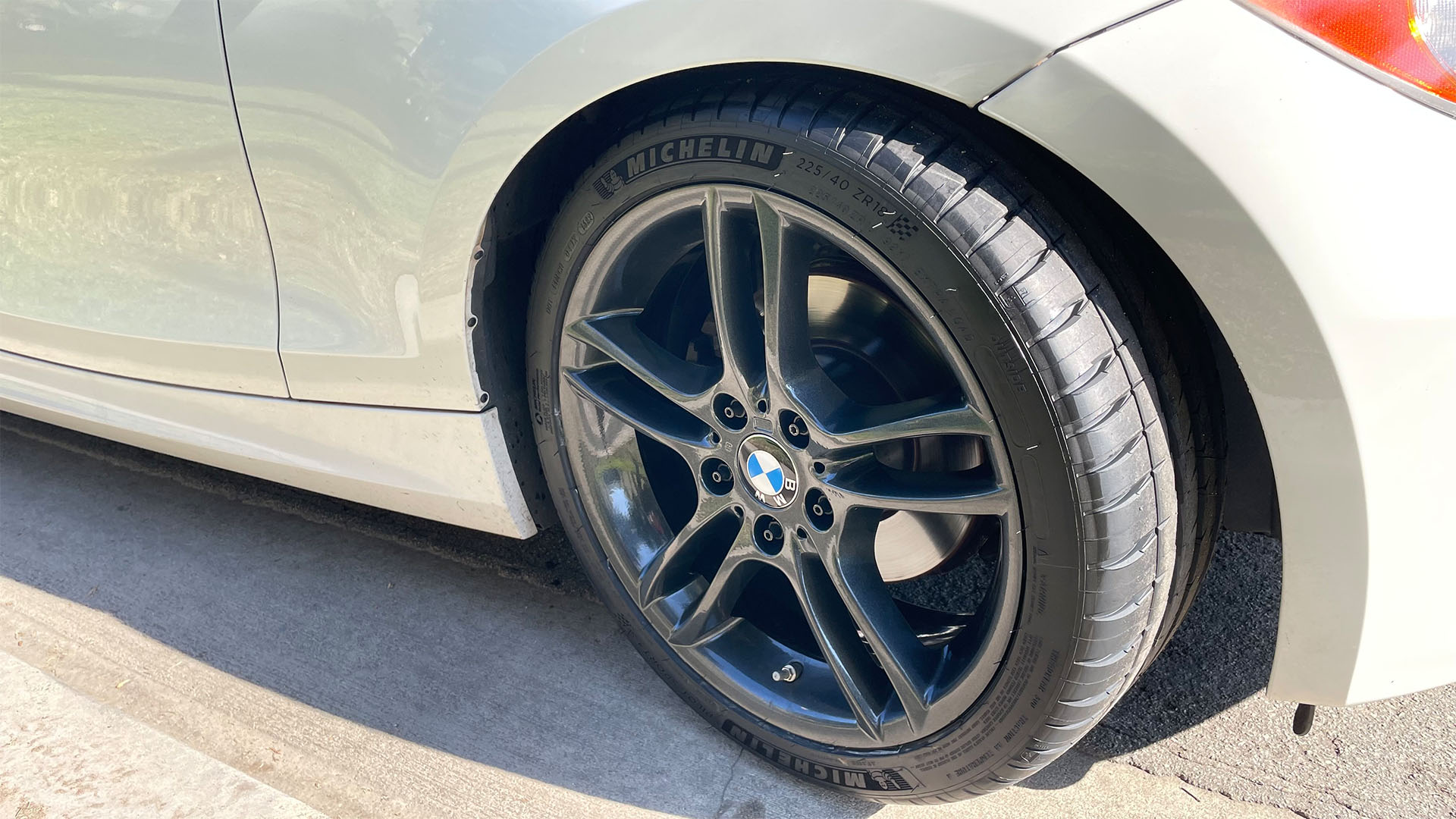

We may earn revenue from the products available on this page and participate in affiliate programs. Learn more ›
Powder coating is a finish you’ll find quite often, as it’s no stranger to components exposed to the harshest environments. Hitches, suspension pieces, wheels, and even engine parts are all familiar territory for the finish. But what exactly is powder coating and how does it serve the automotive community?
Needing to know more is just part of your nature as a gearhead, but it’s also worth learning about now that affordable DIY systems are an option. And understanding it is your first step to applying it. The next step is, of course, getting yourself a decent toaster oven. No, seriously.
Don’t worry, you’ll find out why and exactly what I mean in a minute, so let’s dive in.
So What the Heck is Powder Coating Exactly?
Powder coating’s name tells you a lot about what’s going on. It’s exactly that, a powder coating that’s applied to the surface of a part. The powder itself is a blend of polymers and pigments. Typically, it’s applied using electrostatic spray disposition. This process applies a positive electrical charge to the powder as it’s sprayed. The part you’re spraying is given a negative electrical charge so that the powder bonds to the surface. Once applied, it is then cured with heat to allow the powder to achieve long molecular chains, boosting the durability of the finish.
Along with the curing process, powder coating generally has the advantage of a thicker-than-usual barrier when compared to liquid coatings. Because it goes on dry, thicker layers are more easily achievable, which translates to better protection of the component beneath.

How is it Applied?
So, where does the toaster oven come in? We’ll get to that in a second because, like any finishing work, preparation is primary.
Getting a good, clean base to work with is essential for proper bonding. Professionals generally use powerful solvents and sandblasting to do so. Along the way, they’ll work over any surface blemishes that can mess with the quality of the finish.
A specialized spray gun is used to apply the powder coat. The gun uses compressed air to provide motion while an electrostatic charge is applied to the powder particles as they pass through the gun. Adding a negative charge to the component you’re working on is achieved by hooking the device’s negative lead up, just like jumper cables on a car. A curing oven is then used to get the component up to about 400 degrees Fahrenheit, allowing the powder to flow out, or melt together, then cure.
Professional shops have systems that are every bit as grandiose as one could imagine, but DIY systems really do make the process as simple as it sounds on paper. Curing can be achieved with a simple toaster oven or a retired electric kitchen oven for a larger part. Just don’t try to use the oven to prepare meals afterward and you’re good.
Alternatively, powder coating can be applied by submerging parts into a container filled with fluidized powder coating. The part is brought up to 400 degrees, then dunked into the powder coating, where the bonding process occurs and curing follows. However, this process isn’t as commonly put to use as the initial process discussed.

How Does it Compare to Other Finishes?
Powder coating is better than paint and other coatings in many ways, as it’s non-toxic, flexible, extremely durable, and can even be applied to a long list of materials used in the automotive world.
Powder coating isn’t universally superior to all other coatings, though. Obviously, it’s easier to simply spray a layer of paint and let it cure than it is to go through the process of powder coating—even with DIY kits simplifying things. Secondly, powder coating doesn’t offer the best UV resistance in most cases. There are exceptions, as specialized blends with UV resistance are available. However, it still adds layers to an already complicated process that will ultimately factor into the decision of which coating to use and when.
Video
If anything, I’ve oversimplified the whole thing. Really, there’s a lot that makes powder coating what it is. Rather than beating your eyes to death with text, I’ve dropped in a video to help explain things. I suspect the all-knowing host of Engineering Explained is from a different dimension as he breaks even the most complex aspects down in a highly-detailed yet easily digestible fashion with ease.

More From The Drive
- Peter Nelson wins an epic battle, claiming a $925 Audi S4
- Andrew Collins dives into what parts you can cheap out on
- James Gilboy, and The Drive team, wishes Carrol Shelby a happy 100th birthday
- Lewin Day dives into the coming 300mph testing of the Hennessey Venom F5
- Aaron Cole tells us about VW’s 335-horsepower sports bus